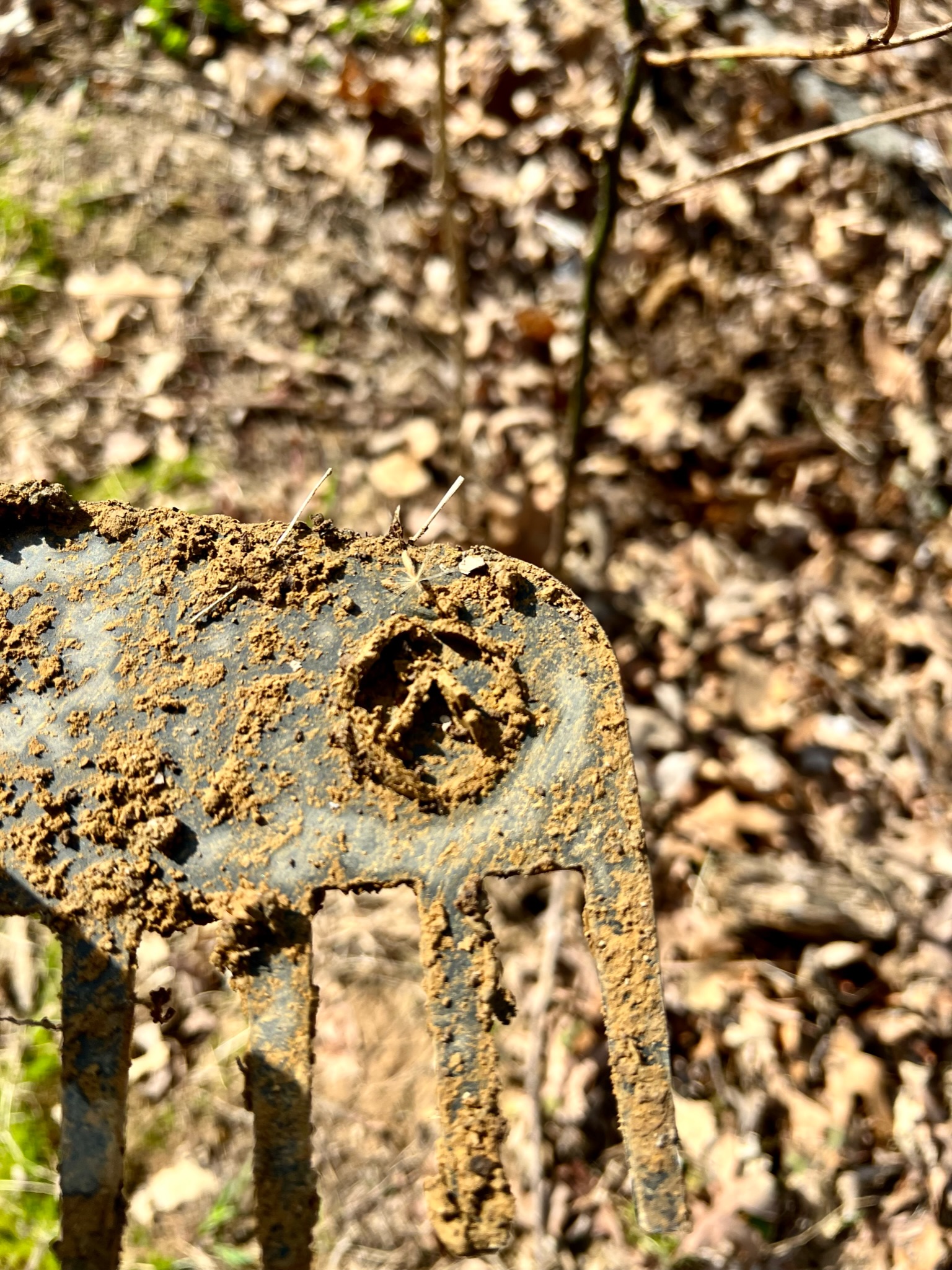
What is it like maintaining trails with Brown County?
Spent the morning and afternoon maintaining trails with the Hoosier Mountain Bike Association, led by Matt Hill. The up.bike trail tools were a hit, and it was super informative to see how they performed in the heavy clay of the Brown County trails in Indiana. Our main task was opening drains, as the heavy clay does NOT allow any water to absorb into the ground, so water management is a huge consideration on these trails, especially given the steep grades we were working around. The beautiful and stately oak trees contributed their share of leaves to the trail, and one of the two places the Loamer shined on the trail work was in clearing the caked up leaves once loosed by the Keretu or the Loamer. Shorter and/or more widely spaced tines might be more effective in clearing the very heavy, wet clay that make up these trails. The term “Peanut Butter” was used at least a dozen times over the course of the 4 hours on the trail. The other place that the Loamer shined was in digging in the actual drainage channels one the heavy work was done with either the Slayer or the Keretu. Matt Hill referred to the sharp, rounded end of the loamer as the “drainmaker 5000” as it was an excellent tool for cutting in an efficient, narrow drainage channel that left maximum room for the trail deck.
Upbike Tools Used
The slayer was its usual workhorse character, with the sharp AR400 cutting edge slicing easily into the thick clay, and the wide tines and broad edges doing their thing in clearing the trail of the clay, leaves, and stones loosened by the cutting edge. After seeing the “play-dough” extruder action from the up.bike logo on the Loamer, the crew did their best to stamp the sweet Slayer logo into the clay wherever they could.
Upbike Tools most Favored
The universal winner for the drain work and trail clearing we were doing today, however, was the Keretu. An absolutely stellar tool for the work, it’s perfect balance of size and features made it the clear tool of choice for this soil type. The heavy clay (peanut butter) loaded every tool out there, adding significant work to every stroke, so the smaller surface area of the Keretu was very welcome in keeping the loaded weight down. Additionally, it’s narrower profile was ideal for digging in the drains while maximizing the trail deck. Still, with the sharp cutting edges and the ability to turn it on edge and clear the clay, sticks, stones, and leaves, and yet still be able to use the flat surface to tamp and compact it was just the best universal tool to have for the work. Definitely the Brown County trails winner.
Tool design takeaways for fabrication design changes
Notes for clay use for our tools: The reinforcement angles welded on to the handle tube loaded up with heavy clay and were NOT an asset. They loaded with heavy clay almost immediately and were very difficult /impossible to clear. For clay work, if we could get rid of them would be very favorable. Also, anything we could think of to make the tools shed clay would be amazing. None of the other tools they had did any better (other than those that were already polished from heavy use, unlike the brand new tools I brought), but the weight of the clay loading the tools was a real factor, that was very hard work to begin with, and adding a few pounds of clay to each swing of the tool tired everyone out. Also, other than the very specific tasks mentioned above, the loamer wasn’t great for these kinds of trails. The tines loaded immediately – shortening them and decreasing the spacing/number of tines by about 40% would probably make a more effective clay rake. Only other suggestions were to be able to add the curved axe-handle style of handle (use a square tube mount instead of the round for the ash handle) and there’s some merit to the suggestion in my opinion. Overall, a great showing and very fun to work on the trails with HMBA. The trails down here are truly outstanding – excellently designed and very well maintained.


